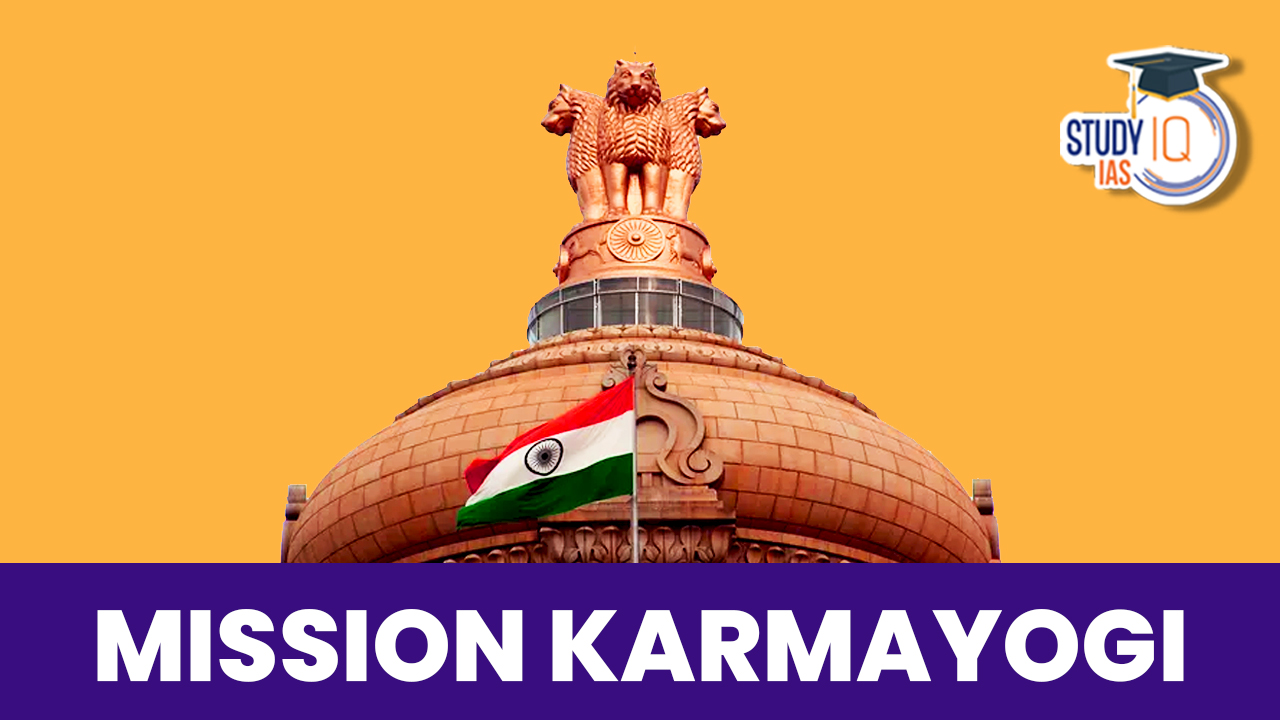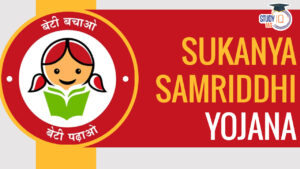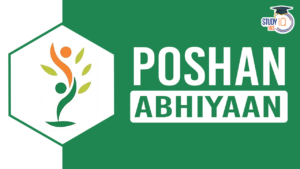Table of Contents
Mission Karmayogi
In a significant stride towards administrative reform, the Government of India introduced the Mission Karmayogi Scheme. Launched with the aim of rejuvenating the country’s civil services, this visionary initiative focuses on upskilling and capacity building for government employees. In this article, we will delve into the key features, objectives, and potential impact of the Mission Karmayogi Scheme, highlighting its role in transforming India’s administrative landscape.
Mission Karmayogi Scheme Overview
The Union Cabinet Ministry has given its approval to Mission Karmayogi Scheme, which is a National Programme for Civil Services Capacity Building (NPCSCB). This initiative represents a new national framework for enhancing the capacity of civil servants at various levels, encompassing individuals, institutions, and processes. It is designed to improve the efficiency of public service delivery. Launched on September 2, 2020, by the Union Cabinet, Mission Karmayogi is poised to bring about significant changes in the Indian civil services arena by shifting the focus from a rule-based approach to a role-based one.
| Aspect | Description |
| Name | Mission Karmayogi |
| Approval | Approved by the Union Cabinet Ministry |
| Launch Date | 2nd September 2020 |
| Objective | Transform the functioning of the Indian bureaucracy |
| Approach | Shift from rule-based to role-based approach |
| Nature | National Programme for Civil Services Capacity Building (NPCSCB) |
| Scope | Comprehensive reform of capacity building at individual, institutional, and process levels |
| Pillars | 6 Pillars |
Mission Karmayogi Civil Services
The Mission Karmayogi Civil Services Scheme is a visionary initiative that envisions a transformed and efficient civil services landscape in India. By focusing on skill enhancement, leadership development, and performance-driven culture, the scheme heralds a new era of responsive and accountable governance. As the civil servants evolve, so will the nation, as it marches toward a brighter and more prosperous future.
Need of Mission Karmayogi Scheme
The transformation of the Indian bureaucracy is an urgent necessity, and it involves several crucial steps. Firstly, it is essential to bolster domain knowledge alongside administrative expertise within the bureaucracy. This means that bureaucrats should not only be proficient in administrative tasks but also possess in-depth knowledge related to their specific domains.
Secondly, a well-structured recruitment process is indispensable. This process should align public service roles with the competencies of bureaucrats, ensuring that the right individuals are matched with the right jobs from the outset.
Thirdly, the reform strategy starts at the recruitment stage but doesn’t stop there. It places a strong emphasis on continuous capacity development throughout a bureaucrat’s career. This approach recognizes that the demands of governance in India are becoming increasingly complex as the economy expands, and, consequently, there is a need for a corresponding enhancement in governance capabilities.
In essence, this reform represents a significant and timely effort to overhaul the Indian bureaucracy, with the ultimate goal of making it more effective and responsive to the evolving needs of the nation.
Key Objectives of Mission Karmayogi
There are some major Key Objectives of Mission Karmayogi are described below:
Capacity Building
The scheme aims to enhance the capacity of civil servants by providing them with cutting-edge training programs. These programs are tailored to address specific skill gaps and align with the evolving needs of the government.
Individual and Institutional Development
Mission Karmayogi emphasizes the development of both individuals and institutions. It recognizes that a well-functioning bureaucracy is a cornerstone of a progressive nation.
Performance Evaluation
The scheme introduces a new performance evaluation system that encourages continuous learning and improvement. It seeks to reward outcomes and efficiency rather than seniority and tenure.
Leadership Development
Recognizing the importance of effective leadership, the scheme offers leadership development programs to nurture visionary and adaptable leaders within civil services.
Salient Features of Mission Karmayogi
Mission Karmayogi boasts several salient features aimed at transforming civil servant training and performance:
Shift from Rules-Based to Roles-Based HR Management
The primary focus is on assigning government roles to civil servants based on their competencies and skills rather than rigid rule-based criteria.
On-Site Learning Complementing Off-Site Learning
Civil servants receive training both on-site (within their work environment) and off-site (external training programs), ensuring a well-rounded learning experience.
Shared Training Infrastructure Ecosystem
Civil servants are encouraged to adapt to a collaborative ecosystem where learning materials, institutions, and personnel are shared across government entities, promoting a more standardized and efficient learning environment.
Framework of Roles, Activities, and Competencies (FRACs)
All government positions within the civil service are assessed and categorized under this framework. Learning content is then created and delivered based on these standardized roles and competencies, ensuring alignment with specific job requirements.
Behavioural, Functional, and Domain Competencies
Civil servants are encouraged to develop competencies across three key areas: behavioural (soft skills and interpersonal abilities), functional (job-specific skills and knowledge), and domain (expertise in specific subject matter).
Co-Creation of a Common Ecosystem
All Central Ministries, Departments, and their organizations actively contribute to building a shared learning ecosystem. This collaboration involves annual financial subscriptions from every employee, ensuring a collective commitment to capacity building.
Partnership with Learning Content Creators
Collaboration with a diverse range of learning content creators, including public training institutions, universities, startups, and individual experts, enriches capacity-building efforts by providing diverse and specialized learning resources.
Mission Karmayogi 6 Pillars
Mission Karmayogi is built on six fundamental pillars, each designed to address key aspects of civil servant training and development. These six pillars are:
- Policy Framework: This pillar establishes the essential policies and guidelines that underpin the program.
- Institutional Framework: It defines the organizational structure and entities responsible for implementing Mission Karmayogi.
- Competency Framework: This pillar outlines the core competencies and skills that civil servants need to acquire and develop.
- Digital Learning Framework (iGOT-Larmayogi): It encompasses the digital infrastructure and tools used for learning and development within the program.
- The Electronic Human Resource Management System: This pillar deals with the technological system used for managing human resources in civil services.
- The Monitoring and Evaluation Framework: This sets up the mechanisms for tracking and assessing the program’s effectiveness and progress.
Institutional Framework of Mission Karmayogi
The highest governing body of Mission Karmayogi is the Public Human Resource Council, with the Prime Minister of India serving as its chairman. The council comprises various key members, including:
- Union Ministers
- Leading Thinkers
- Global Thought Leaders
- Public Service Functionaries
- Chief Ministers
- Distinguished Public HR Practitioners
Additionally, to facilitate the successful execution of Mission Karmayogi and establish a robust governance framework, the following institutions have been established:
- Prime Minister’s Public Human Resources Council: This is the apex body overseeing and guiding the mission’s initiatives.
- Coordination Unit Headed by the Cabinet Secretary: This unit, led by the Cabinet Secretary, ensures seamless coordination among various government departments and stakeholders involved in the mission.
- Capacity Building Commission: This commission plays a vital role in designing and implementing capacity-building programs and policies for civil servants.
- Special Purpose Vehicle (SPV): The SPV is responsible for operating and owning the digital assets and technological platform used for online training. It ensures the effective use of technology in the mission’s training and development initiatives.
What is iGOT-Karmayogi?
The iGOT-Karmayogi platform, short for Integrated Govt. Online Training on the Ministry of HRD’s DIKSHA platform, serves as a pivotal tool for capacity building within the government. This continuous online training platform is designed to cater to government servants across various levels, ranging from assistant secretaries to secretaries, with a focus on their specific domain areas.
Key Features of iGOT-Karmayogi:
Here are some key features of iGOT-Karmayogi:
- Diverse Course Offerings: The platform offers a wide range of courses, including those from international universities, ensuring that government officers have access to a comprehensive array of learning resources to enhance their skills and knowledge.
- Continuous Learning: Government servants can engage in ongoing training, fostering a culture of continuous learning and development throughout their careers.
- Curated Learning Material: The platform aims to become a premier marketplace for digital e-learning content. It features carefully curated and vetted learning materials, ensuring quality and relevance.
- Integration of Service Matters: In addition to capacity building, the platform is set to integrate essential service matters such as confirmation after probation, deployment, work assignments, and notification of vacancies. This integration aligns with the proposed competency framework, streamlining and optimizing various aspects of government service.
Mission Karmayogi Scheme Benefits
Some of the key benefits of the Mission Karmayogi scheme include:
- Shifts from a rules-based to a roles-based HR management approach, aligning competencies with job requirements.
- Focuses on domain knowledge, and functional, and behavioural competencies, promoting continuous self-driven and mandated learning paths.
- Establishes uniform training standards nationwide, fostering a common understanding of India’s aspirations and development goals.
- Aims to build a future-ready civil service in alignment with the vision of New India.
- Emphasizes on-site learning alongside off-site training.
- Encourages collaboration with top-tier learning content creators, including public training institutions, universities, startups, and individual experts.
Challenges of Mission Karmayogi
While Mission Karmayogi is a significant initiative with the potential to transform civil service training and development in India, it also faces several challenges that need to be addressed for its successful implementation. Some of the key challenges include:
- Resistance to Change: Bureaucracy often resists change due to a preference for the status quo.
- Shift from Generalist to Specialist Approach: Moving from generalist to specialist roles can encounter resistance despite the need for domain expertise.
- Technical Governance Demands: Effective governance today requires technical proficiency, necessitating skilled personnel.
- Behavioral Change: Bureaucrats must shift their mindset to embrace change as a necessity, not a threat.
- Active Participation: Online courses should ensure active engagement, preventing them from becoming sabbatical opportunities.
- Defeating the Purpose: Courses must be effective, fulfilling their intended purpose of enhancing competencies.
Mission Karmayogi UPSC
The Mission Karmayogi Scheme has the potential to revolutionize the functioning of civil services in India by fostering a culture of continuous learning, innovation, and adaptability. This addresses long-standing issues like bureaucratic inertia and resistance to change, aligning with the government’s digitalization efforts.
Mission Karmayogi initiative is crucial for UPSC aspirants, particularly for GS Paper – 2, State services, and other civil services exams. It offers a competency-based approach, preparing future bureaucrats with essential skills for effective governance and aligning with the UPSC Syllabus. Leadership development and ethics are emphasized, and vital for civil service roles. It also provides insights into government policies and challenges, which are invaluable for UPSC interviews and essays. By equipping civil servants with modern skills, the scheme enables them to tackle complex issues, contributing directly to efficient governance and the realization of India’s developmental goals.


 Employment Linked Scheme (ELS), Objectiv...
Employment Linked Scheme (ELS), Objectiv...
 Sukanya Samriddhi Yojana, Features, Elig...
Sukanya Samriddhi Yojana, Features, Elig...
 Poshan Abhiyaan, POSHAN 2.0, Features an...
Poshan Abhiyaan, POSHAN 2.0, Features an...





















